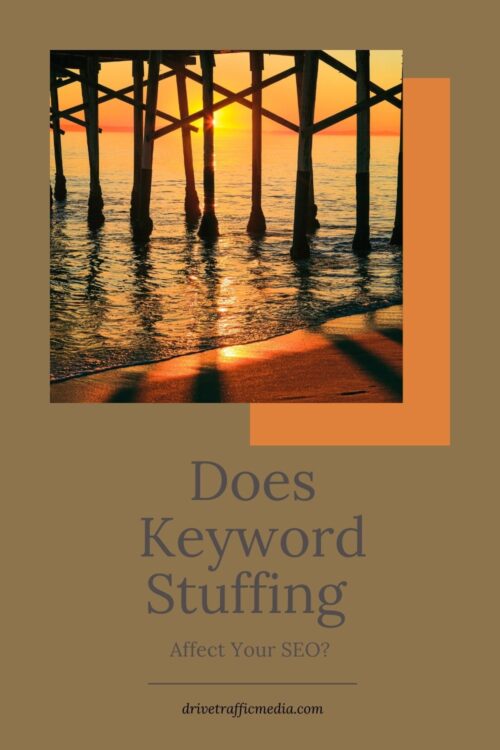A practice once so prevalent, keyword stuffing was utilized by many websites back than to manipulate Google’s search bots. While it came at the cost of useful information, it was undeniable that keyword stuffing quickly and greatly improved a site’s visibility and search rankings.
Today, the concept of keyword stuffing is enough to bring a sense of dread to any of today’s SEO experts. What is so bad about it? How much has changed since then? Can we bring it back?
As an SEO company in Orange County, we’re here to answer your questions.

What is Keyword Stuffing?
Back in Google’s early days, their bots weren’t as sophisticated and relied on some pretty basic signals to get a site indexed. One of these signals was how often keywords or key phrases showed up on a site. If a searcher typed in a keyword or key phrase exactly how you typed it on your page, you’d have a higher chance of ranking higher on search engines.
Naturally, a lot of people started taking advantage of this signal by shoving in as many keywords and as many variations of keywords as they could on one page. They’d start overusing these in their content, making it look clunky and hard to read. They would even have entire paragraphs with keywords alone and sometimes hide it with white text so the stuffing wouldn’t be as obvious. Then, they’d do the same thing with their page titles and meta descriptions.
This practice is what’s called keyword stuffing, and it was considered very beneficial for sites at that time. But is it still beneficial today?
When Did Things Start Changing?
Keyword stuffing as a ranking factor started changing in 2003 when Google launched its pivotal Florida update. It was Google’s first attempt at weeding out spam and demoting any website that participated in spammy tactics. While keyword stuffing still worked after the update, it definitely wasn’t as effective as it had been before.
Then, in 2011, Google rolled out another update. This was called the Panda update and specifically targeted websites with low-quality content. As keyword-stuffed websites focused more on getting ranked than providing information that was useful and entertaining to their readers, they fell off the ranks very quickly. Google strongly recommended against keyword stuffing after this update.
With Google’s Hummingbird update in 2013, keyword stuffing was essentially made obsolete. This update brought about major changes in Google’s algorithm by allowing natural conversations. Instead of typing in keywords, you could type in a whole sentence. Google would be able to understand what you’re looking for and bring you the most relevant search results even without specifically-typed keywords.
Where’s the Evidence?
Evidence against keyword stuffing is mentioned in Google’s Webmaster Guidelines, which is a general guide that all sites must follow if they want to be indexed by Google. It states:
“Keyword stuffing refers to the practice of loading a webpage with keywords or numbers in an attempt to manipulate a site’s ranking in Google search results. Often these keywords appear in a list or group, or out of context (not as natural prose). Filling pages with keywords or numbers results in a negative user experience and can harm your site’s ranking. Focus on creating useful, information-rich content that uses keywords appropriately and in context.”
Honestly, if all the earlier discussion wasn’t enough to convince you of keyword stuffing’s disadvantages, then this official statement from Google surely will.
Conclusion
Google has confirmed that keyword stuffing is a negative ranking factor and has algorithms set up to prevent websites that do it from ever ranking. Trying to manipulate the search engines with this shady tactic will only lead to your downfall.
Instead, you should focus more attention on providing well-written content. Content writing had largely shifted from writing for search engines to writing for the people after Google’s Hummingbird update, so as long as you provide informative and entertaining reads for your customers and add in a keyword here and there, you’re good to go.
Still got a lot of questions about SEO? We’ve got you covered. Drive Traffic Media is a trusted company that offers SEO services in Orange County. Contact us today at (949) 800-6990 or at info@drivetrafficmedia.com!
